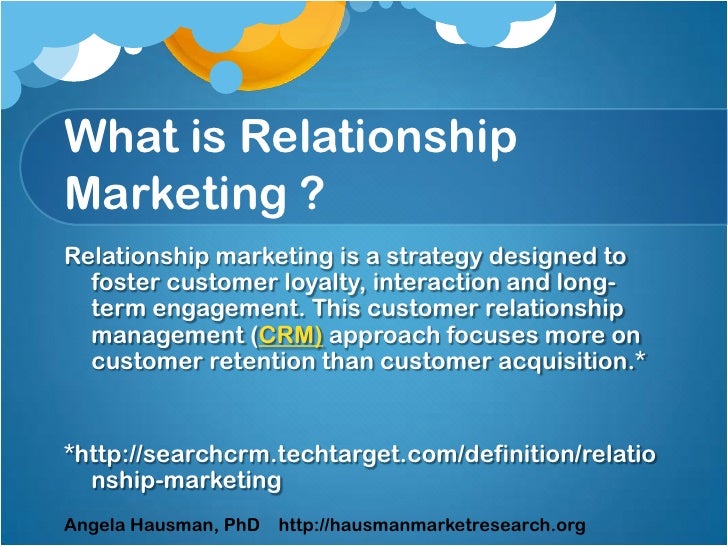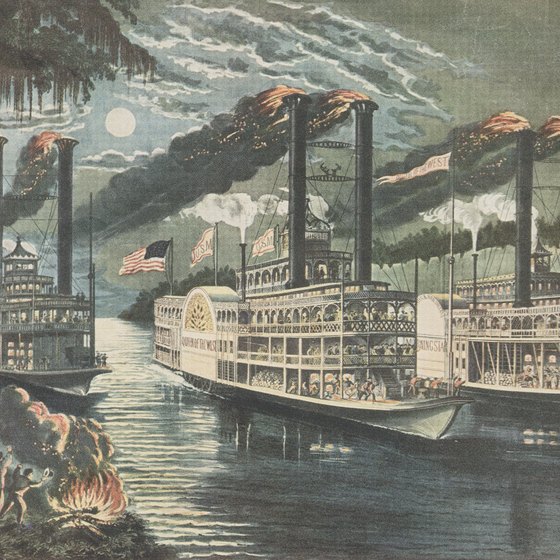Using IMC to Make Relationships Work (part A)
by
Charles Lamson

Interest in relationship marketing coincided with the interest in integrated marketing communications (IMC). In fact, according to Northwestern professor Don Schultz, IMC is what makes relationship marketing possible.
The link is interdependence, the fundamental characteristic of all relationships. As former Drake University professor Lou Wolter points out, "IMC is the management of interdependence in the marketplace."
IMC: The Concept and the Process
Technology has enabled marketers to adopt flexible manufacturing, customizing products for customized markets. "Market driven" today means bundling more services together with products to create a "unique product experience." It means companies and customers working together to find solutions.
The counterpart to flexible manufacturing is flexible marketing---and integrated marketing communications---to reach customers at different levels in new and better ways.
IMC is both a concept and a process. The concept of integration is wholeness. Achieving this wholeness in communications creates synergy---the principle benefit of IMC---because each element of the communications mix reinforces the others for greater effect.
For example, when a Mountain Dew grocer runs an endcap promotion (a special display at the end of an aisle) alone, it might generate a 10 percent increase in volume. If he runs an ad for Dew with a coupon, that might deliver a 15 percent increase. But running both together might grow volume by 35 percent. That is synergy---because the whole is greater than the sum of its parts.
Tom Duncan, director of the IMC program at the University of Denver, points out that IMC is also a process in which communication becomes the driving, integrating force in the marketing mix and throughout the organization.

The Evolution of the IMC Concept
With the phenomenal technological changes in the last two decades came a host of specialized media and the fragmentation of the mass market. At the same time we witnessed a flood of mergers and acquisitions, the ascension of the global marketplace, the escalation of competition between various internal departments and external suppliers, and the arrival of more sophisticated, critical, and demanding customers. Suddenly, companies faced costly redundancies and inefficiencies as company departments with different missions and agendas all sought to achieve their particular goals, often at odds with either corporate or customer needs. For efficiency, companies needed to coordinate the multiplicity of inconsistent company and product messages being issued.
Many companies initially took a narrow, inside-out view of IMC. They saw it as a way to coordinate and manage their marketing communications (advertising, sales promotion, public relations, personal selling, and direct marketing) to give the audience a consistent message about the company.
A broader, more sophisticated, outside-in perspective of IMC, sees customers as partners in an ongoing relationship, recognizes the references they use, acknowledges the importance of the whole communications system, and accepts the many ways customers come into contact with the company or the brand. Companies committed to IMC realize their biggest asset is not their products or their plants or even their employees, but their customers. Defined broadly:
Integrated marketing communications is the process of building and reinforcing mutually profitable relationships with employees, customers, other stakeholders, and the general public by developing and coordinating a strategic communications program that enables them to have a constructive encounter with the company/brand through a variety of media or other contacts.
Whether a company employs the narrow view or the broad view depends to a great extent on its corporate culture. Some companies enjoyed rapid growth and strong customer relationships because they intuitively integrated and focused all corporate and marketing activities. Saturn, Apple, Honda, Nike, and Banana Republic are just a few.

Tom Duncan recognized four distinct levels of integration that companies use; unified image, consistent voice, good listener, and at the most integrated, world class citizen (see Exhibit 1). These levels demonstrate how IMC programs range from narrowly focused corporate monologues to broad, interactive dialogues, resulting in a corporate culture that permeates an organization and drives everything it does, internally and externally.
Exhibit 1
Levels of integration.
How The Customer Sees Marketing Communications To truly understand IMC, we have to look through the customer's eyes. In one study, consumers identified 102 different media as "advertising"---everything from TV to shopping bags to sponsored community events. Customers also develop perceptions of the company or brand through a variety of other sources: news reports, word of mouth, gossip, experts' opinions, financial reports, and even the CEO's personality.  All these communications or brand contacts, sponsored or not, create an integrated product in the consumer's mind. In other words, customers automatically integrate all the brand-related messages that emanate from the company or some other source. The way they integrate those messages determines their perception of the company. IMC gives companies a better opportunity to manage or influence those perceptions and create a superior relationship with those stakeholders.
The Four Sources of Brand Messages
To influence customers' perceptions, marketers must understand one of the basic premises of IMC: that everything we do (and do not do) sends a message. That is to say, every corporate activity has a message component. Duncan categorized four types of company/brand-related messages stakeholders receive: planned, product, service, and unplanned. Each of these influences a stakeholder's relationship decision, so marketers must know where these messages originate, what effect they have, and the costs to influence or control them.

Exhibit 2
The integration triangle.
The Integration Triangle
The integration triangle developed by Duncan and Moriarty is a simple illustration of how perceptions are created from the various brand message sources (see Exhibit 2). Planned messages are say messages---what companies say about themselves. Product and service messages are do messages because they represent what a company does. Unplanned messages are confirm messages because that is what others say and confirm (or not) about what the company says and does. Constructive integration occurs when a brand does what its maker says it will do and then others confirm that it delivers on its promises.
*SOURCE: CONTEMPORARY ADVERTISING 11TH ED., 2008, WILLIAM F. ARENS, MICHAEL F. WEIGOLD, CHRISTIAN ARENS, PGS. 246-249*
|
END


No comments:
Post a Comment